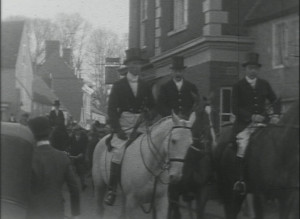
"The Meet of the Whaddon Chase fox hunt on Boxing Day in 1930, with riders on horseback and foxhounds gathering first in Winslow’s market place, attracting a crowd of locals, before heading off to the countryside on this rather grey and foggy day." (EAFA Database)
"Kaneko also made a few films that explored the theme and style of the city symphony genre. In Kōkyōgaku (Symphony, 9.5mm, 1930), which is less than three minute long, Kaneko edited together shots of very short duration that captured objects such as trees, water, and rail tracks; Kaneko described this work as an attempt to create “the movement of objects in symphonic ways.”" - Noriko Morisue, "Filming the Everyday: History, Theory, and Aesthetics of Amateur Cinema in Interwar and Wartime Japan" (Yale University: PhD Dissertation, 2020): 110.
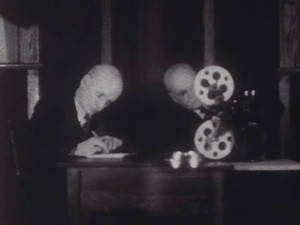
"Amateur production. A man, Dent Harrison, falls asleep and dreams that the R-100 sails for North America from its base in England. Various long shots of the airship under way. After the mooring procedure is completed, S/L R.S. Booth, S/L E.L. Johnson, Capt. G.F. Meager and other members of the crew meet with the welcoming party led by Minister of National Defence, J.L. Ralston. G/C Stedman, G.J. Desbarats, Maj. Gen. McNaughton and officers of the U.S. Navy are also in attendance. Several civilians are also in the party. Harrison's "clone" visits with his "brother". Cut back to the airship and shots of repairs to damage sustained in a thunder storm over Trois-Rivières. Visitors climb into the airship in a high wind. The R-100 is shown leaving on its Canadian flight. View of the shadow of the ship on the ground and several shots from various distances, notably from Windrift, the summer home of the Harrisons at Lakeside, Québec. Aerials of Niagara Falls, Welland Canal, Toronto, a lake steamer, Kingston, Queen's University, Kingston Penitentiary, the Thousand Islands, with cuts inside the airship's gondola, with crew men silhouetted against bright windows. More aerial shots of Cornwall, the shadow of the R-100 on Montreal, Côte-St-Luc and Verdun. Various ground to air long shots and closer views of the R-100 in flight, of the airship moored to its mast at St-Hubert air base. Sequences on Dent Harrison talking to his "clone" as he edits his footage, projects it into the lens of the camera. The two have lunch and the clone departs. Shots of the R-100 leaving as seen fromn directly underneath. Cut back to Harrison waking up from his dream." (LAC description)
"The construction of the POM (Pride of Montreal) Bakery in Montreal. Some commercial harvesting footage with baking at POM." (LAC description)
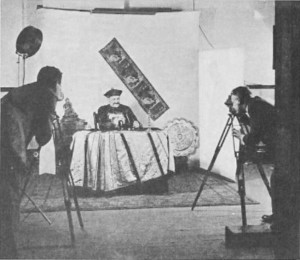
Promotes the all-round activities of YMCA work and their relationship to character-building. Kenyon, a one-time YMCA athlete, has "fallen into evil companionship" and become addicted to cocaine. Under the control of Chinese underworld kingpin Chang Yat, he aids in the kidnapping of a white girl. Afterwards, he discovers his old "Y" pin and recalls the role of YMCA athletics in shaping his character. Seized with remorse, he overpowers Chang Yat and helps the girl escape. Later, Kenyon returns to the YMCA. (D.J. Duffy, condensed from "Y.M.C.A. Cinema Club Produces Smart Film," Toronto Daily Star, May 31, 1930, p. 30.)
Film was sponsored or co-produced by the Central Y.M.C.A. of Toronto, and written by the club's secretary, H.G. McKinley.
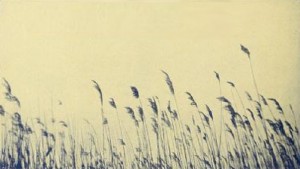
"The first on the list, Rushes, 300 ft., 16mm., filmed by J. V. D. Bucher, is an unusual effort, for it presents a continuity theme woven about a single subject, the wild rice plants in a marsh. It well illustrates what distinctive subjects for amateur movie making are offered by scenes close at hand that are often ignored. It is a satisfyingly beautiful study of the rushes, telling the story of their resistance to the assaults of nature, climaxed with their defeat by fire. The plan offered a large number of exposure problems which were successfully handled. Of particular beauty are the scenes of the burning rushes, taken with a fast lens, and fog effects and closeups of the plants' plume like heads, taken with filters against cloudy skies. The continuity motif used is simple and yet unites the subject into a complete entity rather than a series of disjointed sequences which happened to be taken of the same subject." Movie Makers, Dec. 1930, 758.
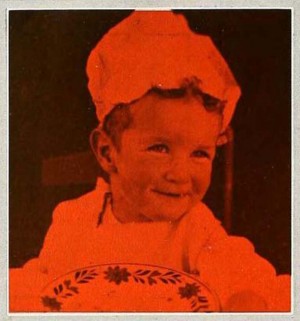
"The Spruyt's film of their children was made with a particular purpose in mind. In Holland the venerable Dutch grandparents of the children were to celebrate their fortieth wedding anniversary and particularly wanted their three sunny haired grandchildren with them for the occasion. Since such a journey could not be made at that time, the film was planned. After an easy introduction into the life of the children, we see them in secret conclave planning a special "surprise" for their grandparents across the sea. As the plot thickens, a secret paper is involved and, after a glorious birthday party of the youngest, there comes the denouement. The children have prepared a scroll, bearing the family's greetings to the distant relatives. With the scroll was sent the film giving the story of its preparation. This ingenious continuity was carried out with excellently chosen and varied camera angles and consistently good photography. Most notable are the many child portrait shots." Movie Makers, Dec. 1930, 759.
"Autumn, filmed by Bernard Van H. Schultz, successfully demonstrates that Kodacolor can be used for long shots of landscapes and similar subjects. This record of a New England autumn, with its accompanying riot of color, leaves very little to be desired as a representation of the spirit of the season. Of particular note was the evident care used in choosing appropriate viewpoints, not only with relation to the framing principle but also from the point of view of both color and motion. The continuity was rather static which was appropriate to the subject. The film was bound together remarkably well by the choice of successive scenes which followed a time sequence, starting with shots taken in the bright light of midday and ending with sunset shots. However, Mr. Schultz's principal achievement lay in the selection of the proper neutral density filters, yielding uniformly excellent color results which are all the more remarkable because of the preponderance of long shots." Movie Makers, Dec. 1930, 759.
"Havana, 400 ft., 16 mm., made by Herman Danz, is outstanding among the recent travel and vacation films rather more for its photographic quality than for its continuity. The film presents Havana, its harbor, street scenes and architecture. Mr. Danz has avoided almost all of the amateur's pitfalls, for the film contains no instances of wobbly "pamming," [sic] jerky shots or unfortunate camera angles, encountered so often in films of foreign cities. Even more important, the treatment is impersonal throughout and purely intimate shots were either not taken or were edited out to be included in a family reel. Thus the film is the type that strangers and friends can enjoy as much as a professional treatment of the same subject. Filters used with panchromatic film brought out cloud formations hanging over the picturesque harbor and emphasized the colorful architectural detail of the buildings." Movie Makers, Dec. 1930, 758-759.
Total Pages: 299